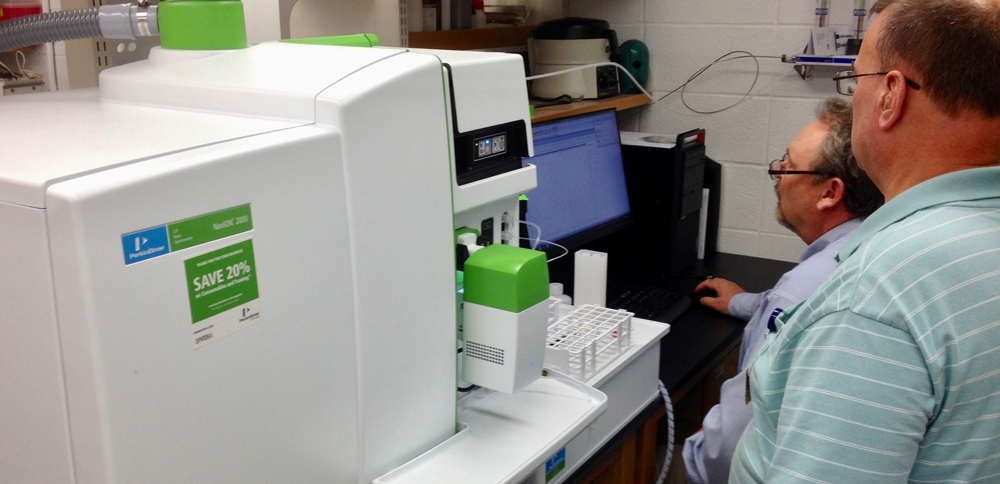Elemental Analysis Facility

Our Mission
The purpose of the Elemental Analysis Facility (EAF) is to support the URMC and U of R research community by meeting the growing need for high-sensitivity quantitative analysis of trace elements within biological, chemical and environmental samples. The objective of the Facility is to maintain and operate state-of-the-art instrumentation and make these analytical capabilities readily accessible to investigators to achieve their research goals. The Facility is equipped with a suite of ICP-MS, OES and AAS instrumentation for trace level elemental analyses. The EAF is directed by Dr. Matthew Rand, in the Department of Environmental Medicine, who is multidisciplinary investigator with expertise in metal toxicology research using both Drosophila and human models.
While we can quantify most elements on the periodic table, our analytical services are strongest for transition elements, with emphasis on toxic metals.
Services include
- Consultation on experimental design and data analysis with experienced staff in elemental analysis of essential and toxic elements.
- Sample preparation and digestion for various tissues, biological matrices and environmental samples.
- Surveying of elemental composition of biological and non-biological matrices.
- High sensitivity determinations of abundance and trace element concentration in biological samples.
Capabilities
- Various protocols for biological and non-biological sample preparation for downstream elemental analyses (e.g. acid, base digestion and microwave digestion).
- Element quantification with parts per trillion (ppt) limits of detection (LOD).
- Quantitative single-element and simultaneous multi-element analyses (e.g. up to 10 elements routinely).
- Multiple methodologies for Hg analyses with ppt limits of detection (LOD).
- Liquid chromatographic separation of complex mixtures and organo-metal speciation.